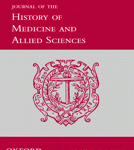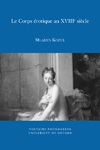Appel à communications – Le corps empoisonné. Pratiques, savoirs et imaginaire de l’Antiquité à nos jours
Poitiers, les 3, 4 et 5 octobre 2012
De l’Antiquité à nos jours, le corps empoisonné a toujours été enveloppé de mystères qui plongent, plus encore que les autres actes criminels et accidentels, l’historien, l’enquêteur, le médecin, parfois même la victime et ses proches, les contemporains comme les observateurs postérieurs dans une perplexité peu commune. Le poison est par essence une arme de la discrétion pour qui veut se défaire d’un ennemi ou d’un concurrent dans la sphère publique comme privée ; ses effets à retardement et ambigus dans leurs manifestations (fatigue, douleurs, symptômes qui renvoient autant à la maladie qu’à l’acte criminel) jouent aussi en faveur de qui veut éveiller les soupçons sur un entourage dont il craint la malveillance et sur lequel il veut attirer l’attention. En effet, l’imaginaire du poison renvoie immanquablement à la ruse, à la lâcheté, au complot et à la trahison, mais aussi au faible : arme de l’ombre elle vient à bout de celui qu’on ne peut atteindre et terrasser directement parce que son statut le protège, sa puissance effraie, parce qu’il est si proche que le risque d’être démasqué est trop grand.
Première séance – Soupçons et certitudes
Le poison crée le doute et le doute autorise la supposition pour expliquer les états de malaise, des disparitions suspectes, des mortalités inattendues et exceptionnelles, des stigmates spectaculaires. Bien entendu, les outils du scientifique, la connaissance ancestrale des fabrications et des capacités vénéneuses de nombreuses plantes et autres substances, les capacités médicales à identifier les effets secondaires de l’empoisonnement depuis la plus haute Antiquité ont permis souvent de passer du soupçon de l’empoisonnement à la certitude de faits prouvés après qu’ils aient été dénoncés, confortés par des témoignages et mis au jour dans le cadre d’enquêtes. Cependant, ce processus total n’est pas toujours réalisable et il ne conduit pas toujours à une réponse claire : la pratique d’autopsies invasives, inconnues en occident avant les derniers siècles du Moyen Âge, et les aveux obtenus dans le cadre d’investigations sont souvent les seuls moyens d’aboutir à la certitude sans faille. Les sources relatant des cas d’empoisonnements (historiographiques, littéraires, judiciaires), les accusations et les craintes d’avoir été empoisonné qui émaillent les correspondances, les rumeurs qui traversent les récits (biographies, histoires, chroniques), pour ne citer que quelques exemples, ne reflètent souvent que la crainte que le poison suscite dans une opinion, un groupe identitaire, une société ou un temps. Les accusations d’empoisonnement, comme le fantasme du poison qui fait naître des soupçons envers certaines catégories de personnes, qui conduit à une prudence déraisonnée et à voir sa trace partout sont aussi dignes d’intérêt pour le chercheur en sciences humaines et sociales que les empoisonnements avérés.
Il s’agit donc non pas de démêler le vrai du faux pour dénoncer quelques légendes d’empoisonnements, mais bien d’attirer l’attention sur les raisons inscrites dans les corps qui font naître de façon spécifique et à une période donnée les soupçons d’empoisonnement, à comprendre les ressorts qui les sous-tendent et à saisir les mécanismes qui conduisent de l’hypothèse à la certitude de l’action du venin.
Deuxième séance – Les lieux et les moments
Près du lit, à proximité de la cuisine, à côté du salon, voire dans le cabinet du médecin, les lieux où du poison est versé ou bien des substances toxiques avalées, donnent le sentiment d’être des plus variés. Malgré tout, ils semblent appartenir, dans la majorité des cas, à l’espace intime. Certes empoisonneurs et empoisonneuses peuvent choisir des espaces publics comme des auberges ou des cabarets, des lieux plus retirés comme les couloirs d’un palais, mais le plus souvent se sont bien des antichambres, des salles à manger, voir la chambre de celui qui est tombé subitement malade. Les lieux ce sont donc les espaces où les substances délétères et funestes sont préparées, achetées, échangées. Ce sont aussi les endroits où les victimes agonisent et trouvent la mort. Ce sont encore les espaces où les cadavres sont examinés, parfois longuement, d’autres fois furtivement.
Pour comprendre l’histoire des empoisonnements, il convient de s’intéresser précisément au passage à l’acte. En effet, si certains crimes peuvent être spontanés, s’inscrire dans l’instant, il n’en est pas de même de l’empoisonnement qui, dans l’imaginaire collectif et dans les pratiques, relève de la préméditation. Les intoxications criminelles nécessitent de choisir un moment particulier, de détourner l’attention et souvent requiert la réitération du geste. Juste avant les repas, au lever, ou bien juste avant de s’endormir semblent constituer des instants privilégiés. Pour s’en assurer, il importera de croiser les sources et d’examiner le phénomène dans la longue durée.
Troisième séance. Les gestes, les objets et les substances
Verser avec régularité de l’arsenic dans la tisane du soir, vider le contenu mortifère d’une bague dans un met raffiné, dissimuler de la mort-aux-rats dans le poulet du dimanche, les gestes, les objets et les substances caractérisent immanquablement celui ou celle qui commet le forfait. Arsenic ou venin, strychnine ou champignons, cocktail médicamenteux ou cigüe, les matières qui vont entrainer la mort ne sont pas indifférentes car cela va déterminer leur action sur le corps. Commune et recherchée, provoquant une mort foudroyante ou alors dans d’innommables souffrances : du choix de la substance dépend l’acte.
C’est le geste qui détermine l’action et celui-ci n’a rien d’anodin. Car une gradation existe entre l’injection par piqure d’une dose mortelle par un malfrat qui élimine un complice et une ration versée quotidiennement dans les mets préparés par une ménagère consciencieuse pour occire son mari. Absorbé dans un plat ou noyé dans une boisson, dissimule dans le chaton une bague ou ingurgité sous forme de médication ou encore apposé dans un vêtement, les gestes qui déterminent l’intention sont autant d’indices de la proximité avec le corps de celui qu’on souhaite supprimer, de sa familiarité aussi. Mais assurément les gestes, les objets comme les substances vont atteindre l’intégrité corporelle avec plus ou moins de sauvagerie et de cruauté ; ils déterminent aussi le genre, le sexe, le statut social et économique mais aussi motivent l’intention comme la préméditation.
Quatrième séance- Les ressorts et les effets
Saisir et comprendre le crime d’empoisonnement impose de restituer les mentalités et l’atmosphère d’une époque. Il s’agit de s’interroger sur ce qui rend possible le crime, de suivre les logiques du geste, de se demander pourquoi des hommes et des femmes décident de se débarrasser d’un mari, d’une maîtresse, d’un rival, d’un supérieur, d’un « gêneur » en usant d’une arme considérée pendant longtemps comme indécelable. Certains crimes d’empoisonnement ont presque été aussitôt oubliés, d’autres sont passés à la postérité et ont bénéficié d’un effet mémoriel certain.
Des crimes de ce type ont donné lieu à une importante production discursive, mais aussi à des savoirs neufs. Légendes, poèmes, complaintes, romans, dramatiques, films lui ont donné une dimension nouvelle. Toutefois, ils ont aussi suscité des peurs et des paniques. Des hommes et des femmes du passé ont ainsi été saisi d’effroi à l’idée de périe en ayant ingurgité une « substance maléfique », pour autant le début du XIXe siècle voit naître une science nouvelle : la « toxicologie ». Dorénavant les batailles d’experts prennent un relief singulier tandis que la peur des « poisons invisibles » reste importante. Le corps est tantôt « âcre, chaud, brulant », tantôt « insensible et immobile ».
Colloque organisé par le CESCM (UMR 6223), le CRHIAM (Gerhico-Cerhilim) (EA 4270), HeRMA (EA 3811) et la MSHS, avec le soutien du Conseil scientifique de l’Université de Poitiers.
●Les propositions de communications (entre 1500 et 3000 signes) sont à envoyer avant le 7 octobre 2011 simultanément aux trois organisateurs dont les courriels suivent :
– lydie.bodiou@wanadoo.fr
– chauvaud.frederic@wanadoo.fr
– myriam.soria@univ-poitiers.fr
● Les organisateurs vous préciseront le 7 novembre 2011 les communications retenues.
● Les frais d’inscription sont de 100 euros (à établir à l’ordre de l’agent comptable de l’Université de Poitiers)
● L’organisation du colloque prend en charge les nuitées, les transports (à l’intérieur de l’espace franco-français) et les repas.
● Les actes du colloque seront publiés sous la forme d’un véritable livre aux éditions Garnier.
 Social history of medicine, Volume 24, Issue 2, August 2011
Social history of medicine, Volume 24, Issue 2, August 2011


